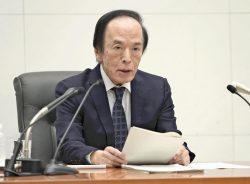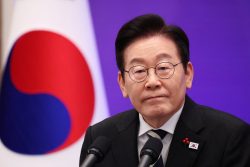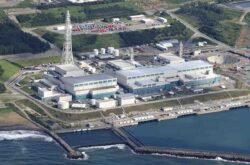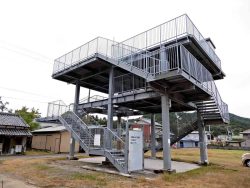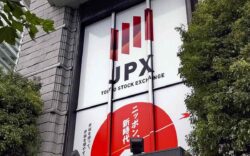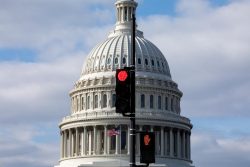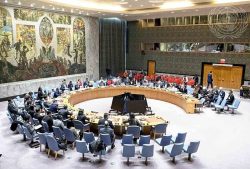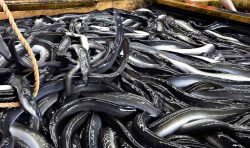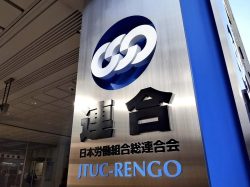Clean Hydrogen Business Facing Growing Headwinds; Supply Costs, Trump’s Focus on LNG Dent Confidence
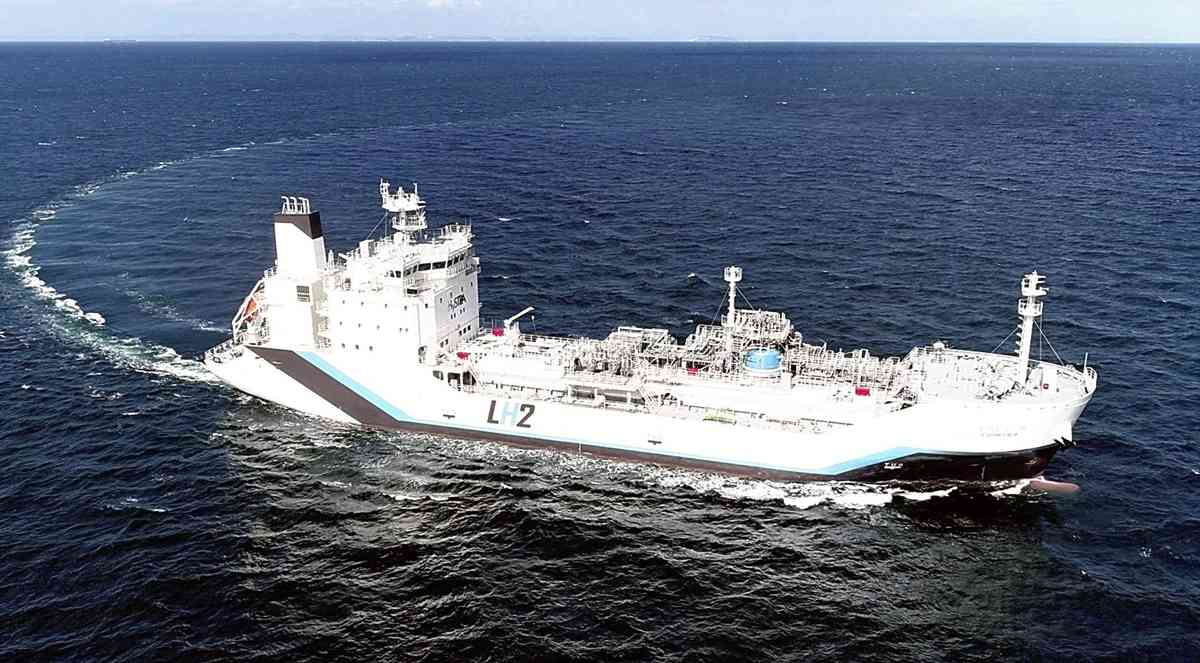
Liquefied hydrogen carrier Suiso Frontier
21:00 JST, March 17, 2025
BANGKOK — There are increasing moves among Australian and European companies to withdraw from the clean hydrogen business, in which the fuel is manufactured in an environmentally friendly manner.
Behind such moves is the difficulty in forecasting demand. Reasons behind this include the administration of U.S. President Donald Trump’s aim to expand the export of liquefied natural gas (LNG) produced in the United States.
Hydrogen, which emits no carbon dioxide during combustion, has been expected to play a key role in decarbonization, but it is now facing headwinds.
Abandoned plans
Australia’s Queensland state government last month said it rejected a request from a state-owned electric power company for more than 1 billion Australian dollars (¥94 billion) of additional investment in a hydrogen project in the eastern Australian state. Japanese trading company Marubeni Corp. is also involved in the project.
David Janetzki, Queensland’s energy minister, told the local media that the investment in the project is not in line with expectations of providing sustainable and affordable electricity to residents.
The project involves green hydrogen, which is produced by splitting water molecules using renewable energy, produced and used in the state as well as a plan to export some to Japan. Total plant construction costs are estimated to be A$12.4 billion.
Since Kansai Electric Power Co., which was to be a recipient of the hydrogen, has already decided to withdraw from the project, it is possible the project itself will be halted.
The Australian government has been focusing on the promotion of the hydrogen industry, taking advantage of the country’s long hours of sunshine and large areas of flat land.
However, Origin Energy Ltd., a major Australian power company, decided to cancel its hydrogen project in autumn last year, with Origin Energy Chief Executive Officer Frank Calabria pointing to the slower-than-expected growth of the hydrogen market.
Growing hesitation
European firms also are growing hesitant to proceed with hydrogen projects. Finnish energy giant Neste Corp. and Spanish oil giant Repsol SA have already decided to freeze or withdraw their hydrogen business plans.
The International Energy Agency said that demand for clean hydrogen, which was up to 1 million tons in 2023, may expand to at least 6 million tons in 2030. According to the British research firm Wood Mackenzie Ltd., however, the global contracted volumes of hydrogen represent only 6% of the total announced production capacity.
Governments have been supporting the production of hydrogen, assuming that the momentum for decarbonization will continue. Japan, for example, aims to promote the spread of hydrogen energy by importing cheap hydrogen, among other means.
However, the Trump administration is expected to withdraw from the Paris Agreement, an international framework to combat global warming, in January 2026, and is aiming to increase the production of fossil fuels.
Since the cost of supplying hydrogen is higher than that of oil and LNG, there is a growing skepticism that demand for hydrogen will steadily increase.
A plan promoted by Kawasaki Heavy Industries Ltd. and others to transport liquefied hydrogen from Australia to Japan by ship as part of a supply chain was abandoned while it was undergoing a demonstration experiment.
With the significant changes in the business environment, Japan may be forced to review its hydrogen strategy in the future.
"Business" POPULAR ARTICLE
-
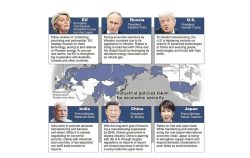
Tokyo Economic Security Forum to Hold Inaugural Meeting Amid Tense Global Environment
-
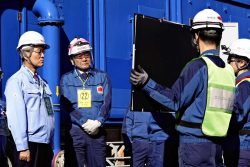
Keidanren Chairman Yoshinobu Tsutsui Visits Kashiwazaki-Kariwa Nuclear Power Plant; Inspects New Emergency Safety System
-
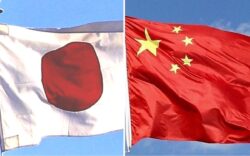
Imports of Rare Earths from China Facing Delays, May Be Caused by Deterioration of Japan-China Relations
-
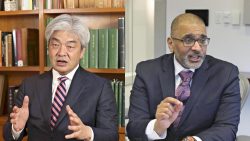
University of Tokyo Professor Discusses Japanese Economic Security in Interview Ahead of Forum
-
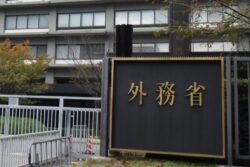
Japan Pulls out of Vietnam Nuclear Project, Complicating Hanoi’s Power Plans
JN ACCESS RANKING
-

Tokyo Economic Security Forum to Hold Inaugural Meeting Amid Tense Global Environment
-

Keidanren Chairman Yoshinobu Tsutsui Visits Kashiwazaki-Kariwa Nuclear Power Plant; Inspects New Emergency Safety System
-

Imports of Rare Earths from China Facing Delays, May Be Caused by Deterioration of Japan-China Relations
-

University of Tokyo Professor Discusses Japanese Economic Security in Interview Ahead of Forum
-

Japan Pulls out of Vietnam Nuclear Project, Complicating Hanoi’s Power Plans



